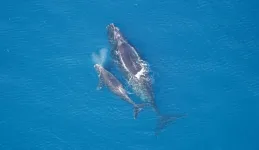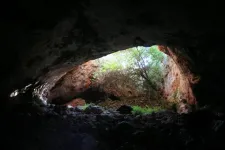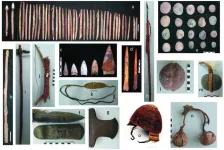(Press-News.org)
From energy production to recreational fishing, Louisiana’s coastal waters are a busy place. Having reliable data about oceanic conditions can be critical to safe operations for those who work and play in coastal waters. Up until now, Louisiana’s Gulf Coast has been hampered by a lack of high-quality information about currents, waves and other important factors.
A new, LSU-led high-frequency radar project will change that.
This $5 million, NOAA (National Oceanic and Atmospheric Administration) funded project will install up to eight high-frequency radar, or HF radar, systems along the Louisiana coastline. Spearheaded by the LSU Department of Oceanography & Coastal Sciences, or DOCS, Professor Kevin Xu and LSU Department of Geology and Geophysics Professor Sam Bentley, this HF radar system will allow near-real-time monitoring of the speed and direction of ocean surface currents in coastal water.
“Coastal Louisiana is one of the most unique places in the world. We’re home to one of the largest river systems and some of the top global port facilities. We have abundant fisheries and energy resources. These reasons and more make our state worth protecting,” said Congressman Garret Graves, who assisted in securing NOAA funding for the project. “Today’s investment will improve our monitoring of coastal conditions, including weather predictions, water conditions and Mississippi River sediment. It will be an important tool to inform future investments and provide more accurate weather conditions. This is a great win for LSU and all of Louisiana.”
“Louisiana’s coast is a working coast that provides services and resources valuable to the entire nation, and it is also a coastal region that is changing environmentally due to a range of factors,” Bentley said. “This HF radar network will provide valuable information to help us track and better understand oceanic and meteorological events. We are deeply grateful for the support we are receiving from NOAA with the assistance of Congressman Garret Graves, and we look forward to getting this going!”
HF radar is widely used on the coasts around the United States. Xu, who also serves as director of LSU’s Coastal Studies Institute, said once they are built, the radar systems will provide crucial information about Louisiana’s coastal conditions.
“We have a large observational gap in the Gulf of Mexico, so this is very much needed. There is a huge potential to use these data in hurricane forecasts, navigation, marine safety, energy production, coastal restoration and other efforts,” Xu said.
HF radar systems measure currents over a large area of coastal ocean and can operate under different conditions. They offer more granular, accurate information than other techniques, such as numerical models or satellite data.
Once Louisiana’s HF radar systems are built, they will contribute data to NOAA’s Integrated Ocean Observing System, or IOOS, a national network of such systems on all coasts. LSU will be participating in the GCOOS, or the Gulf of Mexico Coastal Observing System, the IOOS’s regional partner.
Brian Zelenke of IOOS noted the technology used in HF radar will make a substantial contribution to the measurement of surface currents and waves across the Louisiana coast. “It will provide thousands of readings updated hourly that cover the ocean out to 100+ miles offshore.”
He added, “By live streaming the readings from this project's CODAR SeaSonde® sensors to the IOOS High Frequency Radar National Network, these oceanographic data from LSU will be made available by NOAA to the public and partners including the U.S. Coast Guard for search-and-rescue, NOAA's Emergency Response Division for oil and other hazardous chemical spill response, and to NOAA's National Weather Service for marine forecasts -- helping to protect lives and property, and enhance the economy of Louisiana and the nation.”
Louisiana’s HF radar system will be fully operational in about five years, Xu said.
DOCS Professor Chunyan Li, as well as Associate Professor Z. “George” Xue—who holds a joint appointment with the Center for Computation and Technology—and Assistant Professor Paul Miller, are also investigators on the project. Also collaborating on the creation and installation of the radar systems will be Steven DiMarco, a professor of Oceanography and Ocean Engineering of Texas A&M University and Jorge Brenner, the Executive Director of GCOOS.
“This is the opportunity we have been waiting for,” said Li. “This project will add a new dimension to our capability for the monitoring and understanding of the coastal ocean environment.”
Chris D’Elia, DOCS Professor and former dean of the College of the Coast & Environment, agreed that the benefits of HF Radar to the Louisiana coast are significant. “The new HF Radar capability will help save lives, livelihoods and property in Louisiana.”
END
SAN ANTONIO (Sept. 20, 2023) – Capitalizing on the power of its longstanding international partnership portfolio, Texas Biomedical Research Institute (Texas Biomed) has created a new global center to foster collaborations in infectious disease research.
The International Center for the Advancement of Research & Education (I·CARE) leverages the power of global exchange to solve complex health issues in an increasingly connected world. Texas Biomed currently maintains a portfolio of more than 15 international partnerships across Latin America, Africa, Asia and Europe. These partnerships are driving research in ...
72% of cetacean and pinniped stocks managed under US jurisdiction are highly or very highly vulnerable to climate change, according to a study published in PLOS ONE led by Matthew D. Lettrich at NOAA Fisheries, in Silver Spring, Maryland, United States of America.
Climate change could affect the distribution, behavior, and movements of marine mammals via warming ocean temperatures, rising sea levels, decreasing dissolved oxygen, declining sea ice coverage, ocean acidification, and salinity changes. Climate vulnerability assessments (CVAs) provide a framework for evaluating climate impacts over a broad range of species. Prior to the study, no known CVAs specifically assessed US-managed ...
Caves served as sites for burial and later modification of human remains for thousands of years in the Iberian Peninsula, according to a study published September 20, 2023 in the open-access journal PLOS ONE by Zita Laffranchi and Marco Milella of the University of Bern, Switzerland, and Rafael Martinez Sanchez, Universidad de Córdoba, Spain, and colleagues.
The use of caves as burial sites is a cultural phenomenon with a broad distribution in both space and time. In the southern Iberian Peninsula, this practice became particularly ...
Interpersonal violence was a consistent part of life in ancient hunter-gatherer communities on the Atacama Desert coast of northern Chile, according to a study published September 20, 2023 in the open-access journal PLOS ONE by Vivien Standen of the University of Tarapacá, Chile and colleagues.
Archaeological research supports the notion that interpersonal violence and warfare have played an important role in the lives of hunter-gatherer groups over time, but many questions remain about the factors that influence such violence. The record of ...
The first comprehensive analysis of the relationship between campaign donations and the issues legislators prioritize with congressional speech is published in the open access journal PLOS ONE this week. While prior research reaches mixed conclusions on associations between political donations in the US and voting patterns of legislators, this research suggests there are substantial associations between donations and policy priorities expressed in congressional speeches, and marks language use as an interesting and viable arena for looking at the impact political donors may have on congressional behavior.
Publicly traded corporations and labor unions in the US routinely raise funds ...
Job ads which use masculine rather than gender-inclusive language are perceived by women as sexist, leading them to feel ostracized, demotivated, and as though they don't belong at work
###
Article URL: https://journals.plos.org/plosone/article?id=10.1371/journal.pone.0290709
Article Title: The impact of gender-exclusive language on women’s anticipated ostracism: A preregistered replication of Stout and Dasgupta (2011)
Author Countries: USA
Funding: Miami University Committee on Faculty Research, Heather M. Claypool Miami University College of Arts and Science, Heather M. Claypool. END ...
Only 1% of US kids who are obese in elementary school transition to a healthy weight within two years, although 1 in 4 overweight children progress to a healthy weight range
###
Article URL: https://journals.plos.org/plosone/article?id=10.1371/journal.pone.0290565
Article Title: Weight trajectories and obesity remission among school-aged children
Author Countries: USA
Funding: Research reported in this publication was supported by the National Institute of Diabetes And Digestive And Kidney Diseases of the National Institutes of ...
The commonly-held belief that attempting to suppress negative thoughts is bad for our mental health could be wrong, a new study from scientists at the University of Cambridge suggests.
Researchers at the Medical Research Council (MRC) Cognition and Brain Sciences Unit trained 120 volunteers worldwide to suppress thoughts about negative events that worried them, and found that not only did these become less vivid, but that the participants’ mental health also improved.
“We’re all familiar with the Freudian idea that if we suppress our feelings or thoughts, then these thoughts remain in our unconscious, influencing our behaviour and wellbeing ...
The Amazon river basin is known for its immense and lush tropical forests, so one might assume that the Amazon’s land is equally rich. In fact, the soils underlying the forested vegetation, particularly in the hilly uplands, are surprisingly infertile. Much of the Amazon’s soil is acidic and low in nutrients, making it notoriously difficult to farm.
But over the years, archaeologists have dug up mysteriously black and fertile patches of ancient soils in hundreds of sites across the Amazon. This “dark earth” has been found in and around human settlements dating ...
HOUSTON ― The University of Texas MD Anderson Cancer Center today broke ground on a 600,000-square-foot facility intended to anchor the institution’s expansive south campus research park. The building was purposefully built to enable collaborative science and impactful breakthrough discoveries that will accelerate efforts to end cancer.
A $668 million institutional investment will support the construction of MD Anderson’s South Campus Research Building 5 (SCRB5), a 7-story building designed by Elkus Manfredi Architects with state-of-the-art research facilities and inspiring public spaces to facilitate exceptional science. ...







